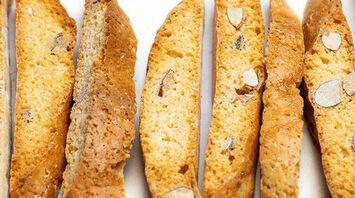What is the difference between biscuits, cookies, biscotti and crackers?

Biscuits, cookies, biscotti, crackers, and muffins have one purpose – they are the perfect complement to tea or coffee. However, in all other respects, these products are radically different from each other.
SSPDaily writes: "Today we will look at 5 main differences between these crispy and crumbly delicacies that we enjoy every day."
Biscuit
The term "biscuit" comes from the Latin words "bis", which means "twice", and "coquere", which means "to cook".
Biscuits are firmer, airier, and thinner than cookies, but they require a hard dough to create.
As a rule, flour, butter, sugar, and salt are used to make biscuits, but they can be filled with different flavors.
Cookies
The name "cookies" comes from the Dutch word "Koekje", which means "small pie".
Interestingly, it was originally created to check the temperature in the oven before baking a real cake!
Cookies are softer and more crispy than a biscuit and can be made with various additives, such as chocolate chips.
The dough is softer, thicker, and denser than for a sponge cake.
Biscotti
Biscotti is a long, dry, and hard cookie that is baked twice.
First, it is baked in the shape of a log, then cut into individual pieces and baked again to achieve the desired texture and moisture.
Biscotti usually contains almonds or pine nuts.
Crackers
Crackers are a dry version of biscuits, a Greek snack known since the 7th century. They are very crunchy and hard to chew if eaten plain.
Essentially, it is a twice-baked rectangular bread that is usually dipped in tea.
Crackers for cake
Cake crumbs are similar to Italian biscotti, but have a few differences.
Like most other delicacies on our list, biscuit crackers are also baked twice. However, sponge dough is used instead of regular dough.
In addition, they taste sweeter and contain more calories than "classic" crackers. And while the latter usually contain cardamom essence, the former contain vanilla.



















